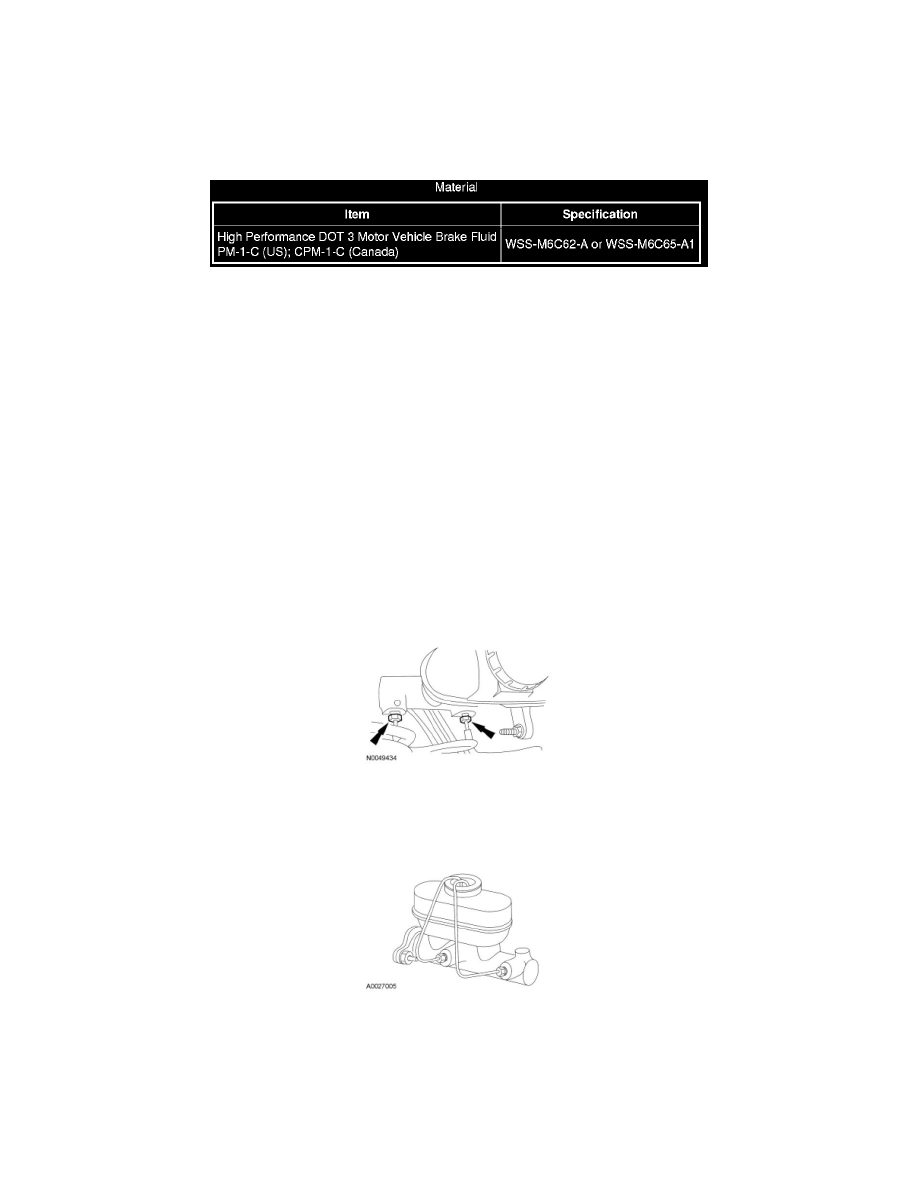Ranger 4WD V6-4.0L (2009)

Brake Bleeding: Service and Repair
Component Bleeding
Master Cylinder
Component Bleeding
Master Cylinder
WARNING: Do not use any fluid other than clean brake fluid meeting manufacturer's specification. Additionally, do not use brake fluid that
has been previously drained. Following these instructions will help prevent system contamination, brake component damage and the risk of
serious personal injury.
WARNING: Carefully read cautionary information on product label. For EMERGENCY MEDICAL INFORMATION seek medical advice.
For additional information, consult the product Material Safety Data Sheet (MSDS) if available. Failure to follow these instructions may result
in serious personal injury.
WARNING: Do not allow the brake master cylinder to run dry during the bleeding operation. Master cylinder may be damaged if operated
without fluid, resulting in degraded braking performance. Failure to follow this instruction may result in serious personal injury.
NOTICE: Do not spill brake fluid on painted or plastic surfaces or damage to the surface may occur. If brake fluid is spilled onto a painted or
plastic surface, immediately wash the surface with water.
NOTE: When the brake master cylinder has been installed new or the system has been emptied or partially emptied, it must be primed to prevent air
from entering the system.
1. Disconnect the brake outlet tubes from the master cylinder.
2. Install short brake tubes onto the primary and secondary ports of the master cylinder with the ends submerged in the brake master cylinder
reservoir. Fill the brake reservoir with clean, specified brake fluid.
3. Have an assistant pump the brake pedal until clear fluid flows from both brake tubes, without air bubbles.
4. Remove the short brake tubes and install the brake outlet tubes.
5. Bleed each brake tube at the brake master cylinder using the following sequence:
1. Have an assistant pump the brake pedal at least 2 times and then hold firm pressure on the brake pedal.
2. Loosen the rearmost brake tube fitting until a stream of brake fluid comes out. While the assistant maintains pressure on the brake pedal,
tighten the brake tube fitting.
